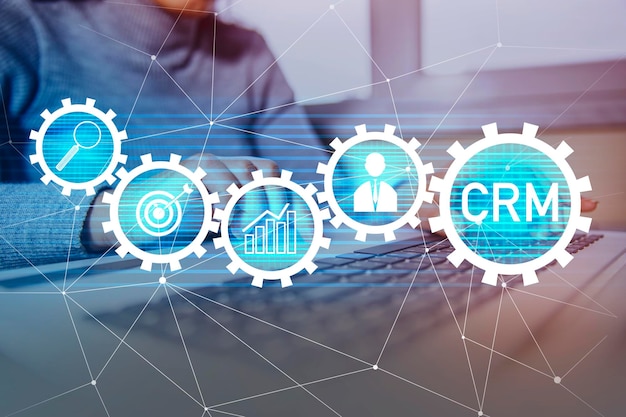
Understanding your customers is crucial, but it’s not enough to simply know their demographics. Being able to predict their future behavior is what really enables you to anticipate their needs, personalize their experiences, and enhance conversions and loyalty.
Predicting customer behavior involves using data and technology to forecast future actions, purchases, or feelings. Imagine knowing which customers are likely to make a high-value purchase, who might leave your brand, or what content will interest them. This isn’t just a futuristic idea; it’s the practical power of customer behavior prediction. By analyzing past interactions, preferences, and buying patterns stored in your CRM marketing system, you can gain insights that help you predict future customer behavior with impressive accuracy.
Instead of sending generic messages to your entire customer base, you can deliver targeted campaigns that resonate with their predicted needs. Personalized journeys can be created for each individual customer, offering relevant recommendations, timely discounts, and engaging content tailored to their future interests.
Customer behavior prediction lets you shift from reactive marketing to proactive engagement. It’s not just about understanding who your customers are; it’s about predicting what they will do and when they will do it. This shift allows you to:
– Segment audiences based on predicted actions, ensuring your campaigns reach the right people at the right time.
– Craft personalized experiences that cater to individual needs and preferences, deepening customer satisfaction and loyalty.
– Deliver impactful messages by anticipating purchase intent and churn risk, tailored to drive conversions and loyalty.
Leveraging data, AI, and advanced analytics for customer behavior prediction helps fuel smarter marketing decisions. So how does your CRM marketing system enable this predictive capability? Let’s delve into the evolution of CRM marketing.
In today’s competitive market, businesses are bombarded with data. But merely collecting it isn’t helpful; the real value comes from unlocking its predictive potential. Predictive customer behavior has become essential for enterprises because it helps with:
– Precise audience segmentation: Move beyond mass marketing. Customers want personalized experiences, and predictive behavior allows for segmentation based on future actions. Campaigns targeted this way are more effective and increase ROI.
– Customized marketing experiences: Customers expect personalized interactions. Predictive behavior allows for creating journeys tailored to individual needs, from recommending relevant products to offering timely discounts. This deepens connections and boosts satisfaction.
– Proactive marketing messaging: Predictive behavior lets you anticipate purchase intent, address churn risk, and tailor your campaigns to encourage conversions and build loyalty.
With the power of predictive behavior, businesses can achieve higher conversion rates, reduced customer churn, improved brand perception, and optimized marketing ROI. Integrating predictive capabilities into your CRM transforms it from a simple data repository to a powerful tool for forecasting customer behavior.
CRMs have come a long way from being mere contact lists. Today’s CRMs are evolving into predictive engines that unlock customer behavior insights. Here’s how:
1. Predictive Power of CRM Data: Modern CRMs store behavioral data like purchase history, website interactions, and support tickets, which can be analyzed to predict future behaviors.
2. Forecasting Trends with AI: Advanced AI algorithms analyze CRM data rapidly, identifying patterns and trends to produce predictive models that forecast customer behavior accurately.
3. Power of Predictive Analytics: Modern CRMs include built-in tools for predictive analytics that use AI and machine learning to generate actionable insights on future actions, churn risk, and purchase intent, enabling data-driven marketing decisions.
4. Overcoming Challenges: Predicting behavior involves challenges like data privacy and ethical considerations. Strategies to overcome these include transparency, model explainability, and data security, which can ensure ethical practices and build customer trust.
To leverage this predictive power in your marketing efforts, follow these steps:
1. Collect and Integrate Customer Data: Gather data from various sources such as website interactions, social media engagement, email marketing, and support tickets. Consolidate this data into your CRM to create a unified customer profile.
2. Analyze Customer Data: Use predictive analytics tools within your CRM to analyze the data. Look for patterns in purchase behavior, churn risk, and engagement patterns.
3. Segment Target Audiences: Use insights from predicted behavior to segment audiences based on purchase intent, churn risk, and engagement level, rather than just demographics.
4. Target and Customize Marketing Activities: Implement personalized marketing campaigns for each segment based on predicted behaviors, such as sending targeted emails, conducting win-back campaigns, and creating content that matches predicted interests.
By following these steps and utilizing the predictive power in your CRM, you can deliver personalized experiences, targeted campaigns, and foster lasting customer relationships. The future of marketing lies in prediction, and your CRM holds the key to unlocking this potential.